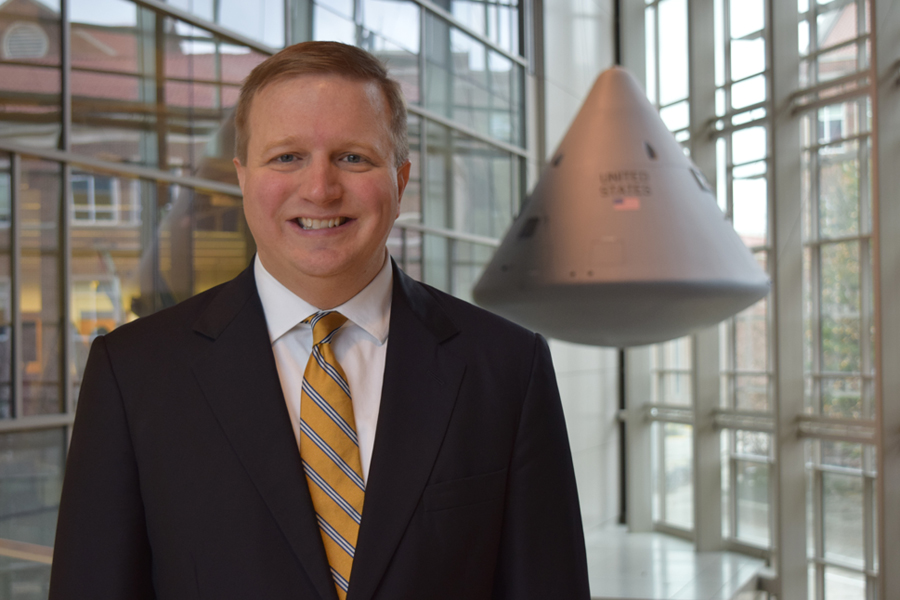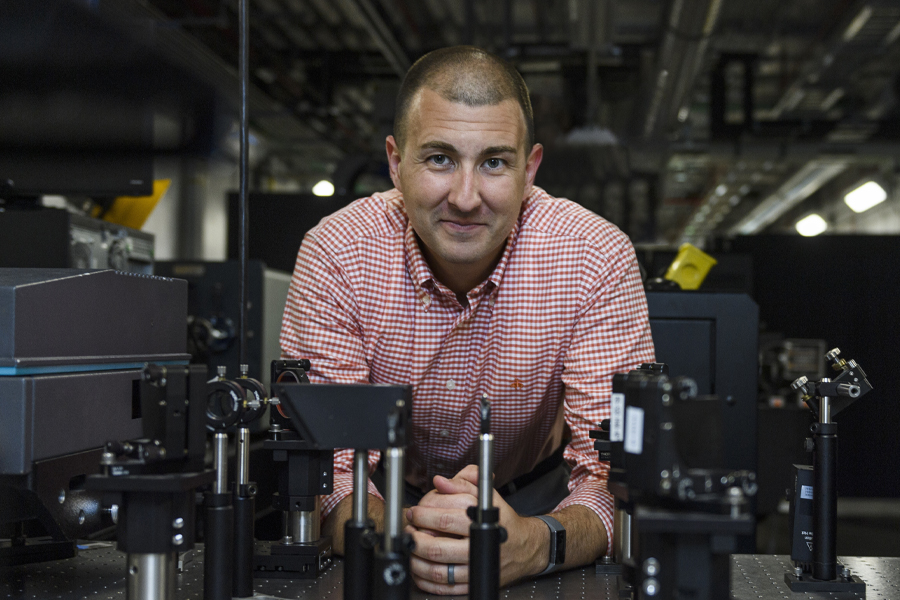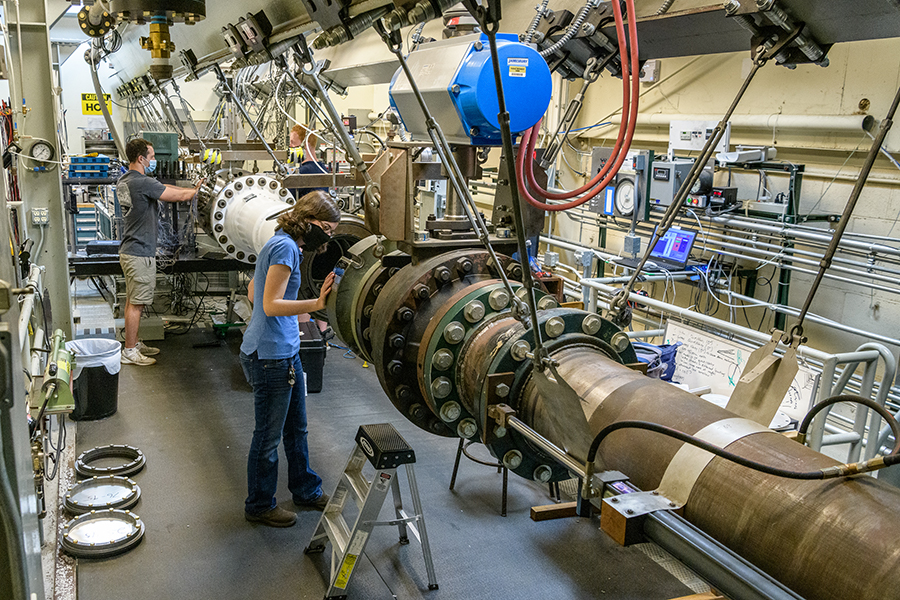
Purdue University is adding a Hypersonic Pulse (HYPULSE) shock tunnel to its expanding array of facilities to research aspects of supersonic flight. The tunnel, donated by Northrop Grumman Corp., expands Purdue’s research and data collection in flow physics and opens new opportunities in tests and evaluations to academia, industry and the government. The HYPULSE tunnel will allow flight simulations at speeds ranging from Mach 5 to as high as Mach 40. At Mach 9, a plane can travel from Washington, D.C., to California in just 15 minutes. A conventional plane leaving Washington, D.C., could reach Virginia, Maryland, and parts of neighboring states in the same time.
Photo provided by Northrop Grumman

Purdue University is adding a Hypersonic Pulse (HYPULSE) shock tunnel to its expanding array of facilities to research aspects of supersonic flight. The tunnel, donated by Northrop Grumman Corp., expands Purdue’s research and data collection in flow physics and opens new opportunities in tests and evaluations to academia, industry and the government. The HYPULSE tunnel will allow flight simulations at speeds ranging from Mach 5 to as high as Mach 40. At Mach 9, a plane can travel from Washington, D.C., to California in just 15 minutes. A conventional plane leaving Washington, D.C., could reach Virginia, Maryland, and parts of neighboring states in the same time.
Photo provided by Northrop Grumman
by Brian Huchel full story additional photos/animations
Purdue University is pushing forward at new speeds in hypersonics work with the addition of a Hypersonic Pulse (HYPULSE) shock tunnel to its quickly expanding array of research facilities.
The HYPULSE tunnel is a donation from Northrop Grumman Corp. Efforts are underway to disassemble and move the 150-foot-long tunnel from Ronkonkoma, New York to West Lafayette, Ind.
Once installed, Purdue will be only the second university in the U.S. to offer such a hypersonics test capability.
Collecting data at higher Mach numbers is critical to extending the understanding of flow physics, especially heat transfer and flight control effectiveness. Defense leaders report that U.S. hypersonics investment has grown dramatically.
Shock tunnels like HYPULSE start with a reservoir of air at high pressure and high temperature. A shock wave is used to shoot the air through a nozzle at high speeds, reaching temperatures as much as 8,000 degrees Kelvin. It allows tests ranging from a thousandth of a second to the longest — a hundredth of a second. The high-speed tests recreate high-speed flight scenarios such as space craft re-entry or missile flight through the atmosphere as well as replicating unique engine conditions for extremely high-speed propulsion.
Hypersonic defense abilities are considered “game-changing” technologies. With systems that can travel at speeds of Mach 5 or faster and are highly maneuverable, hypersonics are potentially very effective against heavily defended areas.
Prior to Purdue, the HYPULSE shock tunnel has seen its share of history, being used by NASA for the space shuttle heat shield and by the U.S. Air Force for design of its X-43 scramjet design, which set several air-speed records.

Joseph Jewell, assistant professor of aeronautics and astronautics, will focus on aerodynamics testing programs.
Purdue University photo

Carson Slabaugh, assistant professor of aeronautics and astronautics, will work with propulsion projects.
Purdue University photo

by Steve Tally
Purdue University and the Johns Hopkins Applied Physics Laboratory (APL) have signed an agreement to collaborate on hypersonic research and related technologies.
Joseph Jewell, assistant professor of aeronautics and astronautics, says the research will make use of Purdue’s “quiet” Mach 6 Ludwieg Tube, which is located at the Purdue University Airport and is a part of the Aerospace Sciences Laboratory. The Boeing-AFOSR Mach 6 Quiet Tunnel facility, which was completed in 2006, is the world’s largest and most capable such wind tunnel.
“In a typical hypersonic wind tunnel, there are pressure waves, acoustic waves that come off the nozzle and into the test section, which can change the results of aerodynamic experiments significantly,” Jewell says. “Ours is designed so that the level of those disturbances is up to 200 times smaller. This agreement with APL will allow us to collaborate in a way that’s much smoother and easier in the future.”
In addition to the collaborative research on hypersonic materials, guidance and navigation control systems, and sensors, the Johns Hopkins Applied Physics Laboratory and Purdue’s Institute for Global Security and Defense Innovation will collaborate to research several technologies, including microelectronics, quantum information, integrated data science, artificial intelligence, and robotics.
As part of the agreement, APL will also provide Purdue faculty and students with access to its facilities, including APL’s robust additive manufacturing hub at its Laurel, Maryland, campus, as well as its subject-matter experts in APL’s Force Projection Sector, Air and Missile Defense Sector, and Research and Exploratory Development Department. The Laboratory also hopes to work further with graduate and doctoral students from Purdue, through internships, mentoring, and other avenues.